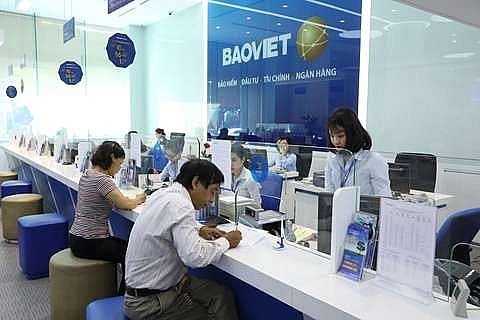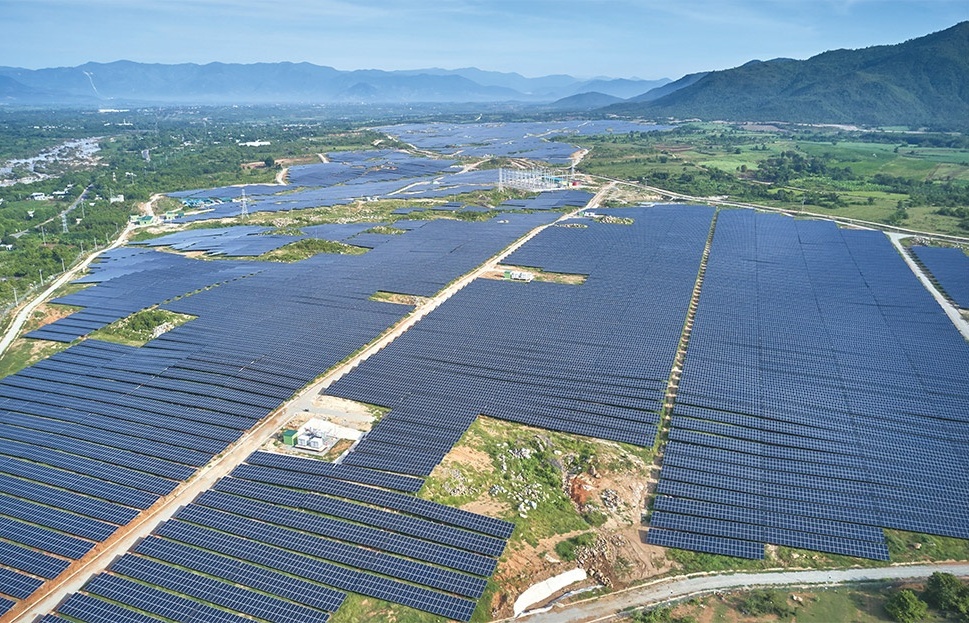Credit growth quota depends on banks’ health
 |
| Investors make transactions at Bao Viet Bank’s Tran Hung Dao branch in Ha Noi. - VNS Photo Truong Vi |
SBV Governor Le Minh Hung said the credit growth target set for this year was equivalent to the rate in 2018 so growth quotas would be assigned on the basis of assessing the operation and ability to develop credit healthily at each bank.
The SBV often sets credit growth limits for commercial banks, and most banks are expecting higher quotas this year as their profits depend significantly on lending services.
According to Le Duc Tho, chairman of VietinBank, his bank needs a higher credit growth quota this year to meet the demands of borrowers, especially for large national projects.
Last year, the SBV allowed VietinBank a credit growth limit of only 6.1 per cent, causing the bank’s pre-tax profit to drop to VND6.8 trillion (US$291.85 million) in 2018.
Banks that are restructuring also expect to have expanded credit growth limits in 2019.
Duong Cong Minh, chairman of Saigon Thuong Tin Commercial Joint Stock Bank (Sacombank), asked the SBV for a credit growth limit of 18-20 per cent for his bank for 2018-20 period, the rate for which in 2019 would be 19 per cent.
Similarly, the HCM City Development Commercial Joint Stock Bank (HDBank) also expects to have a higher credit growth limit this year as it is in the process of completing a merger with Petrolimex Group Commercial Joint Stock Bank (PGBank).
Nguyen Xuan Thanh, director of the Public Policy Programme at the Fulbright School in HCM City, said the allocation of credit growth limits based on each bank’s health was appropriate as the pressure on credit growth in the banking industry was currently not significant.
Other experts also said the central bank should cautiously consider any expansion of credit growth limits for banks because it would carry risks, explaining if credit growth allocation was not strictly controlled, it would affect credit quality and cause bad debt to increase sharply.
Can Van Luc, chief economist at the Bank for Investment and Development of Vietnam, said banks shouldn’t expand lending unless they could manage the risks to ensure sustainable development.
In a recent report, Moody’s Investors Service also said moderation in Vietnamese banks’ credit growth was positive for their asset quality and capitalisation, explaining lower credit growth encouraged banks to focus on better quality borrowers, which would improve asset quality in the long term.
Experts forecast the central bank would continue control credit growth at around 14 per cent per year in the next three to five years, lower than the average rate of 18.1 per cent in the 2015-17 period.
SBV data showed Vietnamese banks’ total credit grew 14 per cent in 2018, the lowest growth rate since 2014. The slower growth was primarily due to the central bank’s tightening of credit growth limits.
What the stars mean:
★ Poor ★ ★ Promising ★★★ Good ★★★★ Very good ★★★★★ Exceptional
Related Contents
Latest News
More News
- Central Bank of Cuba chief visits Hanoi to work with VBSP (November 22, 2024 | 15:49)
- Credit sees steady growth towards year-end (November 21, 2024 | 17:46)
- HDBank wins three titles at Vietnam Listed Company Awards (November 21, 2024 | 10:01)
- VLCA’s corporate governance mission (November 21, 2024 | 10:00)
- The promotion of ESG via banking (November 21, 2024 | 09:32)
- Standard Chartered committed to Vietnam’s financial success (November 21, 2024 | 09:24)
- Full ESG adoption the priority for Agribank (November 21, 2024 | 09:07)
- Banks entice youth with tech advances (November 21, 2024 | 08:00)
- Banks shaping the future as business advisors (November 20, 2024 | 21:00)
- ESG represents a shift towards sustainability for banks (November 20, 2024 | 13:00)




 Tag:
Tag:

















 Mobile Version
Mobile Version